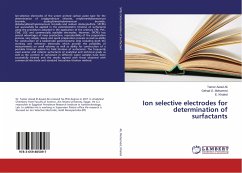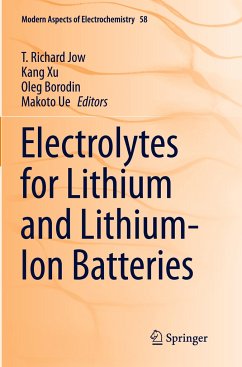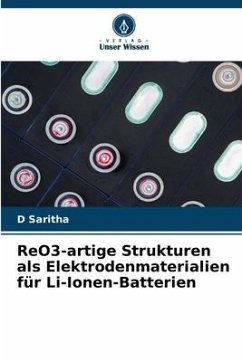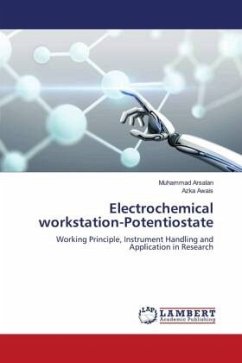
ReO3- type structures as electrode materials for Li-ion batteries
Versandkostenfrei!
Versandfertig in 6-10 Tagen
29,99 €
inkl. MwSt.

PAYBACK Punkte
15 °P sammeln!
In recent years, research into potential substitutes for carbonaceous anode materials working at higher potentials in Li-ion batteries has picked up steam. It is imperative for safety reasons to swap out the low voltage graphite negative electrode ( 0.4V versus Li+/Li) with alternative materials functioning at greater voltages. The need is met by titanium and niobium oxides with the redox couples Ti4+/Ti3+, Nb5+/Nb4+, and Nb4+/Nb3+ operating at 1.5V vs. Li+/Li. It would be fascinating to compare TiTa2O7's isostructural behaviour to the electrochemical behaviour of TiNb2O7. Investigation of W/N...
In recent years, research into potential substitutes for carbonaceous anode materials working at higher potentials in Li-ion batteries has picked up steam. It is imperative for safety reasons to swap out the low voltage graphite negative electrode ( 0.4V versus Li+/Li) with alternative materials functioning at greater voltages. The need is met by titanium and niobium oxides with the redox couples Ti4+/Ti3+, Nb5+/Nb4+, and Nb4+/Nb3+ operating at 1.5V vs. Li+/Li. It would be fascinating to compare TiTa2O7's isostructural behaviour to the electrochemical behaviour of TiNb2O7. Investigation of W/Nb and Ti/Nb based phases with shear ReO3 structure is motivated by the potential for accessing the redox couples of Ti/Nb or W/Nb as well as the ease with which Li can be added to or removed from the ReO3 structure.



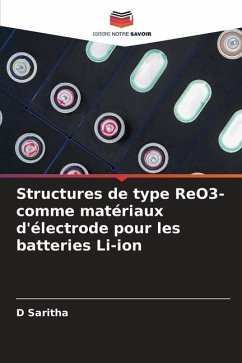



![Calix[4]arene based ion-selective electrodes Cover Calix[4]arene based ion-selective electrodes](https://bilder.buecher.de/produkte/45/45354/45354132n.jpg)
